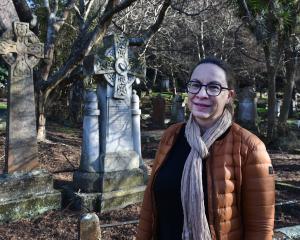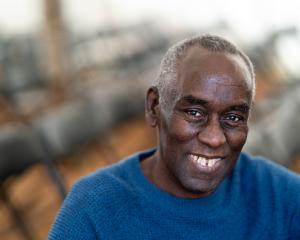
THE EXPRESSIVE FOREST: Essays of the arts and ecology in Oceania
Denys Trussell
Brick Row, $49.99, pbk
Review by Gavin Mclean
The essays in The Expressive Forest represent several decades of thinking by poet, biographer and musician Denys Trussell.
The book is polemical, but gentle, intended to help us find ways back to living elegantly and well with the rest of the species of this planet.
Although the book skirts around the Gaia theory in places, Trussell taps into a far older Western philosophy to argue against a Richard Dawkins mechanistic view that "to build only the human city is to end up with a high-tech wasteland".
The essays were first published between 1977 and 2008, although Trussell says he still stands by them, and has edited them only lightly.
He prefaces each with a paragraph to explain the context in which the piece was written.
That, and a thoughtful preface, bibliography and a very full index mark this out as an intelligent compilation, not a lazy scissors-and-paste job.
The book is in three sections - art and nature, art and artists, and writers - although they intertwine like the leaves and branches of the cover painting. As they should.
The first part of the book is entitled "The Art in Nature and Nature in Art".
One of the last pieces compares a poetry anthology to a well-turned compost heap.
The chapter "Two New Zealanders and the Poetics of Agriculture", sweeps across time from the ancients of Greece and Rome to Rex Fairburn and the life-force in the farmer and the farmed in which the land "is not just an industrial zone where organisms are units making the matter to sustain the billions in a rootless community".
Trussell has a delightful way with words.
"Dan Poynton's recital and the amount of interesting piano music now published here convince me that this instrument no longer sits precariously on the beach, washed up almost comically in the tide of European settlement" he post-Campionishly comments in one place.
"It has lumbered inland and settled down to a new terrain of sound."
The art section, the biggest, is perhaps the most frustrating unless you have seen the many artworks Trussell refers to.
Some paintings are reproduced in colour in wraps, but the alternative is to pull your New Zealand art books off the shelves and see whether you agree or disagree with him.
The fact that I dragged out so many (and googled many of the rest) testified to the strength of his arguments about artists such as Dean Buchanan, Alan Pearson and Nigel Brown.
The final section, writing, features six essays, examining such heavyweights of New Zealand as R.A.K.Mason and Denis Glover and a review of The Oxford Companion to New Zealand Literature in which he reminds us that art historian Eric McCormick, frustrated by Auckland arty bitchiness, reminded fellow party-goers that "we should regard all these painters as engaged in adding their tiny portions which one day could/would be a magnificent coral reef."
That's the way to view this book.
The Expressive Forest is not definitive (Trussell wouldn't see it that way) but it's provocative, insightful and in its own way haphazardly encyclopaedic in its range if not in completeness.
It's a book to be digested slowly, not necessarily read from cover to cover.
- Gavin McLean is a Wellington historian and reviewer.











